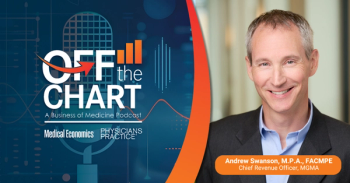
Key Provisions of the Affordable Care Act for Physicians
Now that the Supreme Court has ruled on the Affordable Care Act, it’s time to take a closer look at the key provisions that will affect you and your patients.
The Supreme Court's ruling to uphold the Affordable Care Act (ACA) by a 5 to 4 margin means for many physicians the end of two years of uncertainty.
Many of you have stalled in preparing for and/or participating in key elements of the healthcare law, and who could blame you. Until Thursday, it was unclear whether the law would actually exist in the future. Now it appears that key provisions of the law scheduled to go into effect in 18 months will become a reality.
Though there is still a ways to go before every milestone is reached (plus, Republican presidential candidate Mitt Romney has said he
Here are a few of the most notable elements of the law to pay attention to:
Physician Pay
The Medicaid expansion portion of the law will broaden the federal program to include individuals under 133 percent of the poverty level, (around $15,000 for an individual; $30,000 for a family of four). That will result in 17 million newly insured individuals in 2014.
In an effort to ensure that physicians don’t shut their doors to these patients, the health law will increase
The ACA also focuses on attracting more physicians to rural areas. It includes
Physician payment reforms just beginning to take root will also continue at full speed ahead. For instance, the healthcare law authorizes funding for a handful of Medicare value- and cost-based reimbursement initiatives, such as a pilot program for bundled payments,
Increased Focus on Fraud and Abuse
The ACA sets forth
That means physicians must ensure that they have a strong fraud and abuse compliance program in place.
"Physicians really can't
Patient Demand
We already mentioned that an estimated 17 million patients will gain insurance as a result of the Medicaid expansion. But that’s only half of it. In total, an estimated 32 million people are expected to gain insurance as a result of the ACA and its various provisions - such as one that allows young adults to remain on their parents’ insurance plans until age 26.
Others will purchase insurance as a result of the individual mandate portion of the law, which requires that most individuals carry insurance or face a tax penalty for not having it. Access to affordable insurance will also increase for individuals who are not currently insured, as the law bars insurers from denying potential customers insurance or charging them higher premiums due to preexisting conditions or medical history.
For those physicians that have not yet begun preparing for this increase in newly insured patients, you may want to start making some changes. The increase in patient demand, coupled with the physician shortage, means you may be scrambling to
It’s important to note that the one element of the law that was struck down has to do with the Medicaid expansion. In simplest terms, originally the ACA stated that the government could refuse Medicaid funding to a state that refused to participate in the expansion. The court said this is unconstitutional and that states could refuse, without risking losing their current funding for Medicaid.
It is unclear how many states will refuse to participate in the expansion. Regardless, there will still be a high number of newly insured individuals who are seeking medical care in 2014.
Patient Health
If you are a primary-care physician, much of the ACA focuses on expanding patient access to the services you provide. Key elements of the ACA that cover preventive services include:
• Preventive healthcare benefits, such as free coverage for mammograms, birth control, and annual wellness visits for Medicare patients.
• Drug benefit coverage for beneficiaries of the Medicare program for the elderly stuck in the prescription drug benefit coverage gap known as the "doughnut hole.”
Again, these provisions will increase patient demand for your services.
[For a complete timeline of ACA benchmarks, check out our
What’s your reaction to each of these provisions of the healthcare law? Are you feeling optimistic or concerned about how they will affect your practice? Do you feel the need to start preparing for upcoming changes now?
Newsletter
Optimize your practice with the Physicians Practice newsletter, offering management pearls, leadership tips, and business strategies tailored for practice administrators and physicians of any specialty.








